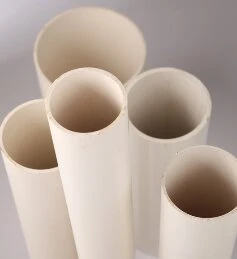Jan . 01, 2025 00:08 Back to list
Recommendations for Choosing the Right Pipe Fittings for Your Plumbing Project
Understanding Pipe Fittings A Comprehensive Guide
Pipe fittings are essential components in plumbing and piping systems, serving as connectors that facilitate the flow of fluids, gases, and other substances. These fittings are crucial in various applications, ranging from residential plumbing to industrial processes. This article aims to provide a comprehensive overview of pipe fittings, including their types, materials, applications, and importance in various industries.
Types of Pipe Fittings
Pipe fittings come in several types, each designed for specific applications. Some of the most common types include
1. Elbows Used to change the direction of flow, elbows are available in various angles, including 45 and 90 degrees. They can be made from metals or plastics and are fundamental in creating bends in piping systems.
2. Tees Shaped like the letter T, these fittings allow for the branching of a pipeline. Tees can be equal or reducing, depending on whether the branches are the same size or not.
3. Couplings Couplings are used to connect two pipes of the same diameter, providing a strong joint that can withstand pressure and temperature changes. They come in various styles, including slip, threaded, and socket types.
4. Reducers These fittings are used to connect pipes of different diameters, allowing for a smooth transition and efficient flow. They are essential in reducing the size of a pipeline while maintaining pressure.
5. Flanges Flanges are used to connect pipes, valves, and pumps. They provide a stable, leak-free connection that is easily maintained and can be disassembled for repairs or modifications.
6. Caps and Plugs These fittings are used to seal the ends of pipes, preventing leakage and contamination. Caps fit over the end of a pipe, while plugs are inserted into the pipe end.
Materials
Pipe fittings can be made from a variety of materials, each suited to different applications and environments
. Some common materials includepipe fitting

- Metal Brass, copper, stainless steel, and carbon steel are often used for their strength and durability. Metal fittings are ideal for high-pressure and high-temperature applications.
- Plastic PVC (Polyvinyl Chloride), CPVC (Chlorinated Polyvinyl Chloride), and PEX (Cross-linked Polyethylene) are popular for residential plumbing because they are lightweight, resistant to corrosion, and easy to install.
- Composite materials These fittings combine elements of metal and plastic, providing strength while reducing weight.
Applications
Pipe fittings are used across various sectors due to their versatile nature. Common applications include
- Residential plumbing From water supply lines to drainage systems, pipe fittings are ubiquitous in homes, ensuring the efficient and safe transport of water and waste.
- Industrial processes In manufacturing and processing plants, pipe fittings are used to transfer chemicals, gases, and liquids. They must withstand rigorous conditions, making material choice crucial.
- HVAC systems Properly fitted pipes and fittings are essential to heating, ventilation, and air conditioning systems, ensuring consistent airflow and temperature control.
- Oil and gas The energy sector relies heavily on pipe fittings to safely transport crude oil and natural gas. Specialized fittings are designed to handle high pressures and corrosive substances.
Importance
Understanding the role of pipe fittings is vital for anyone involved in construction, plumbing, or manufacturing. The right fittings ensure not only the integrity of the piping system but also the safety and efficiency of operations. Incorrect fittings can lead to leaks, system failures, and costly repairs.
In conclusion, pipe fittings are a foundational element of modern infrastructure across multiple industries. Their diverse types and materials cater to various needs, from household plumbing to complex industrial systems. By selecting the appropriate fittings and understanding their applications, professionals can enhance the functionality and reliability of piping systems, contributing to efficient and effective fluid transport.
-
Durable PP Rigid Sheet: Lightweight, Chemical Resistant Solutions
NewsAug.21,2025
-
PVC Grey Sheet for Extraction: Chemical Resistant & Durable
NewsAug.19,2025
-
Durable PVC Pipe Fittings for Plumbing & Irrigation Needs
NewsAug.18,2025
-
HDPE Steel Belt Reinforced Spiral Corrugated Pipe | High Strength
NewsAug.17,2025
-
HDPE Pipe Fittings: Durable, Leak-Proof Solutions
NewsAug.16,2025
-
Premium CPVC Sheet: High-Temp & Chemical Resistant Solutions
NewsAug.15,2025

